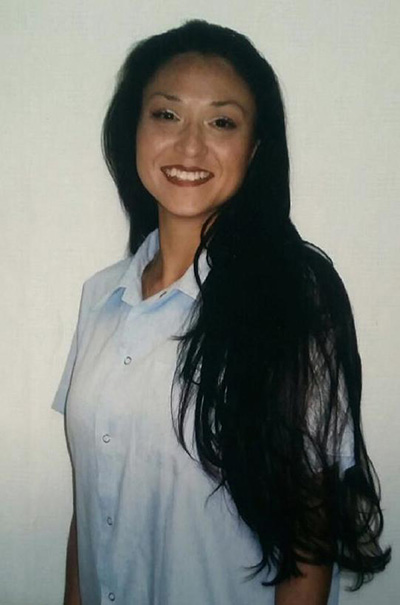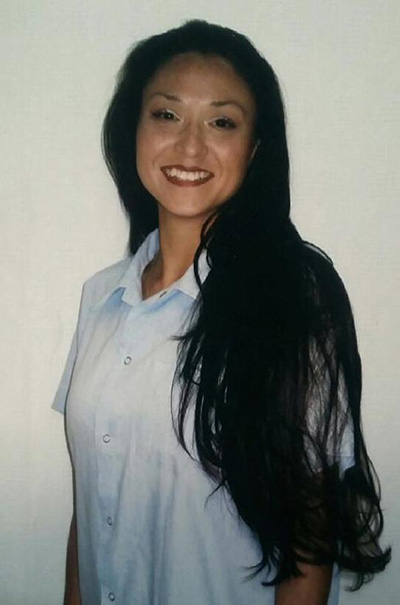 Erika Rocha, 35, who committed suicide in her California Institution for Women jail cell on April 14, 2016. (Photo: Courtesy of Linda Reza)Erika Rocha was a 35-year-old Latina woman incarcerated at the California Institution for Women in Corona. She was found hanging in her cell on April 14, 2016, after 21 years of incarceration. Erika was only 14 years old when she was charged and convicted as an adult in Los Angeles County.
Erika Rocha, 35, who committed suicide in her California Institution for Women jail cell on April 14, 2016. (Photo: Courtesy of Linda Reza)Erika Rocha was a 35-year-old Latina woman incarcerated at the California Institution for Women in Corona. She was found hanging in her cell on April 14, 2016, after 21 years of incarceration. Erika was only 14 years old when she was charged and convicted as an adult in Los Angeles County.
I visited Erika in prison as a volunteer legal advocate with the California Coalition for Women Prisoners. She told me about the abuses she suffered at the hands of the State of California since she was 14. With no family by her side, Erika was intimidated by police and threatened by prosecutors with a double life sentence for attempted murder. This threatened sentence was far beyond the charge, but Erika was scared and confused. Police had interrogated her with no guardian present. She waived her Miranda rights, without understanding what that meant. The district attorney aggressively prosecuted Erika, who had grossly inadequate legal representation. Under pressure, she took the blame for the older kids involved and pled to a 19-to-life sentence. When it came time for her sentencing proceedings, Erika sat in court alone. The criminal legal system is intimidating for a well-resourced adult. Imagine what it was like for Erika.
Erika’s story highlights how the criminal legal system intimidates, coerces and traps people, especially low-income youth of color. As a Latina youth, it was 43 percent more likely that Erika would be prosecuted as an adult and 40 percent more likely that she would be admitted to an adult prison compared to a white youth. As a poor youth in a foster care group home, Erika faced a much higher chance of incarceration. Erika’s mom died when she was young, and she had recently learned that her dad was not dead but incarcerated.
Erika was sent to a women’s prison in Chowchilla at 16 years old. Prison staff placed her in solitary confinement to “protect her” until she was 17. At our first visit, she told me that guards said they put her in solitary to protect the prison because she was too young to be there. They put a neon sign on her cage door that read “Do Not Approach – Minor.” This would be just one of Erika’s four indefinite solitary terms.
Erika was in a mental health unit when I met her. She spoke openly about attempting suicide and about her extended time in this unit and on-and-off suicide watch. Erika suffered from dehumanizing treatment for mental health issues attributable to her incarceration as a youth. Her trauma was worsened by the isolation of incarceration, added to by further isolation in solitary (including suicide watch). Formerly incarcerated leaders of the California Coalition for Women Prisoners who supported Erika as a teenager in prison have said she sought support for her trauma since the beginning of her incarceration. Since the moment I met Erika, I worried about her ability to stay alive, because of her notable and stated vulnerability and because of the prison system’s proven ability to make her life impossible.
Erika was traumatized, but she also had a fighting spirit and a sweetness and a youthfulness that I will always remember. We made plans to fight for her release. She talked about wanting to tell the world what she survived. She wanted to fight for youth justice, and when she trusted me enough to start telling her story, she wouldn’t stop talking.
This past weekend, Erika’s sisters and stepmother (whom she met shortly before she was arrested) shared some of her writing with me from October 1996. Erika was 15 and locked up in juvie when she wrote, “When I was very young people always left me. I felt that they didn’t even love me … I care a lot about people but they don’t care about me and it hurts me. I don’t know, I’m just a confused kid just like everyone says.”
Erika was more than confused — she was neglected and abused. The child welfare system, the District Attorney’s Office and the California Department of Corrections and Rehabilitation are all responsible for Erika’s death. She took actions to end her life, but the criminal punishment system killed her. These institutions robbed her of any sense of her own future, even a day away from her youth parole hearing.
In the weeks leading up to her death, Erika was transferred to suicide watch at least three times. The day before her death, she was released from suicide watch and returned to a mental health unit. The California Institution for Women failed to save Erika’s life the very next day.
Several of Erika’s closest people are now on suicide watch. The suicide watch unit at the California Institution for Women is overcrowded and the prison has mental health crisis beds on “overflow” in the SHU (“security housing unit”), further endangering people’s lives. In 2015, the suicide rate at the California Institution for Women was more than eight times the national rate for people in women’s prisons and more than five times the rate for people in California prisons. In January 2016, a court-ordered suicide prevention audit by suicide expert Lindsay Hayes concluded that the prison continues to be “a problematic institution” with “poor practices” that fail to prevent suicides.
This week the California Coalition for Women Prisoners launched a petition demanding an end to the epidemic of deaths and attempted suicides at the California Institution for Women. Impacted by the trauma of incarceration, people are speaking out and demanding an end to incarceration as a cause of death. In honor of Erika, the California Coalition for Women Prisoners also seeks support for the Public Safety and Rehabilitation Act to eliminate the power of prosecutors to directly file youth under the age of 18 into adult court. We also support legislation to limit solitary confinement for youth and to ensure that youth cannot waive their Miranda rights. Since we helped start it, California should end the war on youth, with its race-, class- and gender-targeted mass incarceration.
Erika’s death was preventable. She should have been loved, not caged.
Join us in defending the truth before it’s too late
The future of independent journalism is uncertain, and the consequences of losing it are too grave to ignore. To ensure Truthout remains safe, strong, and free, we need to raise $47,000 in the next 8 days. Every dollar raised goes directly toward the costs of producing news you can trust.
Please give what you can — because by supporting us with a tax-deductible donation, you’re not just preserving a source of news, you’re helping to safeguard what’s left of our democracy.
